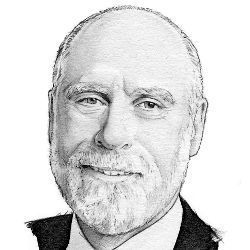
In my last column (June 2020), I wrote about my experience with COVID-19 and the challenges involved with getting medical attention. The problem is still with us, even with the improved availability of personal protection equipment and masks. The experience of calling for a doctor's appointment and being told I could not come into the doctor's office was unsettling to say the least. A "video consultation" was all that was offered. My reaction was "Wait, you won't be getting any vital signs or other medical information that way!" This led to the natural conclusion that remote detection would be helpful in these conditions. Telemedicine has long been of interest, especially for treating patients in rural or isolated areas where physicians and hospitals may be in short supply or absent entirely. Wearable sensors have become popular items for people who want to track their daily exercise or challenge themselves to exceed past performance with new records.
Many companies make devices that can sense steps taken, pulse rate, heart beats, blood-oxygen levels, rate of motion, temperature, blood glucose levels, and weight among other metrics. Some devices are already in regular use to record continuous health conditions such as wearable heart monitors. Until now, these have made local recordings for later analysis. In the future, one can easily foresee real-time monitoring and diagnosis through the Internet. Many mobile phones support applications that gather, analyze, and present this information. There seems little doubt that many more devices will be developed for non-invasive measurement. It is entirely feasible for more invasive devices such as pacemakers, defibrillators, and arrhythmia detectors to be linked to watches or mobile phones. I will call these, generally, the Internet of Medical Things. Adding to these, videoconferencing and high-resolution cameras on mobile phones, one can begin to imagine a significant capacity for remote medical diagnosis and triage. The possibilities get longer as more sophisticated measurements become possible taking urine, stool, and blood samples (finger pricks) for local analysis. One can find research papers on artificial olfactory systems and while this work is still in its infancy, it seems reasonable to anticipate successful manufacture of such systems in the not too distant future and which could contribute to the efficacy of telemedicine.
The utility of remote sensing has already become apparent with the COVID-19 epidemic and one might imagine that such practices may become the norm rather than the exception. Such a practice might increase the capacity to perform diagnosis, with tools such as machine learning to provide continuous monitoring and useful alerts. It would be like having a real-time, long-term and continuous doctor's appointment. Increased dependence on such tools opens the question of accurate detection and diagnosis of adverse conditions. False positive and negative detection rates would need to be minimized. Legal controversies are surely predictable, especially in the litigious U.S. Despite these risks, however, the prospect has very positive potential.
Widespread practice of continuous monitoring could also help with the general assessment of population health, allowing for early detection of epidemic outbreaks and assistance in tracking the spread of communicable illnesses such as the SARS-COV-2 virus. Of course, this also raises the challenge of keeping personal medical information private. Cryptography and strong access control may well contribute to solutions but also pose challenges for cryptographic key management. Every access control mechanism has the potential to be a point for denial of service. Managing keys and access to them will be a predictable challenge if the Internet of Medical Things is to become a common part of public health practice.
It seems inescapable that the Internet of Medical Things will be greatly desired to aid the conduct of safe medical intervention. It will certainly drive the demand for Internet addressing, lending another argument to the importance of adding the IPv6 addressing capability throughout the global Internet. Even if a vaccine for this current pandemic is developed, there will be other pandemics and other communicable disease situations that will benefit from remote diagnosis and triage. I think this notion is here to stay.



Join the Discussion (0)
Become a Member or Sign In to Post a Comment